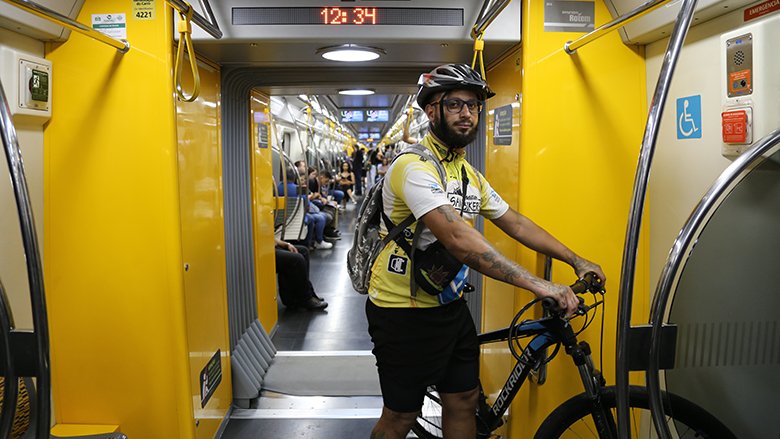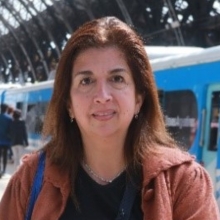Key Highlights:
- World Bank projects have resulted in reduced greenhouse gas (GHG) emissions and commuting times. For example, the upgrading and greening of Rio de Janeiro's Urban Rail System reduced transport-related GHG emissions by 17,703 tCO2-eq between 2009 and 2022, representing an 89 percent reduction compared to the counterfactual. The operation of São Paulo's Metro Line 5 is estimated to save 2,960,000 tCO2eq over its economic lifetime. Investments in Bus Rapid Transit (BRT) in Buenos Aires reduced travel times for BRT users by 53 percent between 2016 and 2019 and increased the overall speed of travel by 105 percent.
- World Bank projects focus on promoting inclusion of the poor. For example, 89 percent of beneficiaries of Rio de Janeiro's updated urban rail system are commuters coming from low-income households. About 58 percent of all trips on São Paulo's Metro Line 5 were made by low-income passengers, with an average daily ridership among these users of 329,000 in 2019. The extension of Lima's BRT system ensures access to jobs in the city center for residents of some of Lima's poorest areas. Moreover, 40 percent of Quito Metro employees are women, including those who serve in managerial, strategic, and operational positions.
- The World Bank has also made important contributions to establishing public-private partnerships. Notably, the São Paulo Metro Line 4 was the first Public-Private Partnership (PPP) of its kind in Brazil, earning global recognition and acclaim as the best PPP in Latin America and the Caribbean, as acknowledged by the International Finance Corporation (IFC).
Challenge
Many Latin American cities suffer from high greenhouse gas (GHG) emissions, congestion, and unequal access to opportunities. As of 2023, transport is responsible for more than 40 percent of regional urban GHG emissions, including from private vehicles (motorcycles and cars). High levels of traffic congestion lead to long commutes, reducing the quality of life for residents. In cities like São Paulo, congestion costs up to 8 percent of the metropolitan area’s GDP. These issues are further compounded by rapidly growing urban populations; when user demand for public transportation outpaces available supply, this consequently limits access for many riders. Constraints on ready access to quality public transit in turn exacerbate the difficulties that low-income households and women, in particular, face in accessing education, employment, social services, and other opportunities, which perpetuates existing inequalities.
Approach
The World Bank’s approach to tackle the issues of high emissions, low productivity and inequality through mass transit systems has been transformational for many Latin American cities. Beyond providing loans and grants, the World Bank has collaborated closely with clients to shape the operations through technical assistance, data analytics, and capacity building. Moreover, the World Bank has established best practices in the sector, encouraged knowledge sharing and scale, for a broad portfolio that includes metro, urban rail, and bus rapid transit, as well as advice on reforms for federal mass transit support and extensive policy and regulatory support on electric mobility.
Results
The World Bank has supported urban mass transit systems through operations and advisory work across eight Latin American countries: Argentina, Brazil, Chile, Colombia, Ecuador, Mexico, Peru, and Uruguay. The World Bank’s support of mass transit in Latin America has allowed client countries to move their transport systems toward a low-carbon path by reducing reliance on road-based transport and improving energy efficiency. World Bank projects also contributed to more inclusive and sustainable urban services through the enhancement of quality and efficiency, and through a focus on specific transport needs of lower-income users and women. Many projects employed innovative data analytics to achieve the following results.
The World Bank has supported the creation and extension of metro systems across Latin America. For example, São Paulo’s Metro Line 4 was the first Public-Private Partnership of its kind in Brazil. Transporting 750,000 passengers per day, Metro Line 4 reduced travel times by 48 percent and doubled the number of jobs accessible within 60 minutes. Similarly, on São Paulo’s Metro Line 5 travel time was halved between the first station (Capão Redondo) and downtown (Se), from 99 minutes at the beginning of the project to 50 minutes in 2020. Notably, Metro Line 5 is projected to bring greenhouse gas (GHG) emission savings of 2,960,000 tCO2eq over the economic lifetime of its assets, largely achieved by metro users reducing the use of private vehicles. The Quito Metro began operations in December of 2023. The system was designed to reduce travel times by 40 percent and provide access to jobs within a 60-minute commute for 51 percent of daily users. Forty percent of Quito Metro employees are women, including those who serve in managerial, strategic, and operational positions.
Bus Rapid Transit (BRT) systems offer another way to enhance mobility for citizens, and the World Bank has supported the establishment of BRT. For example, in Buenos Aires, investments in BRT infrastructure reduced travel times for passengers by 53 percent between 2016 and 2019 and increased overall speed of travel by 105 percent. Lima’s BRT (Metropolitano) transported about 700,000 passengers per day prior to the COVID-19 pandemic, and 600,000 as of 2023; the North Extension Project is expected to add 150,000 additional passengers per day, and has been designed to further improve access to jobs for residents of some of Lima’s poorest areas.


